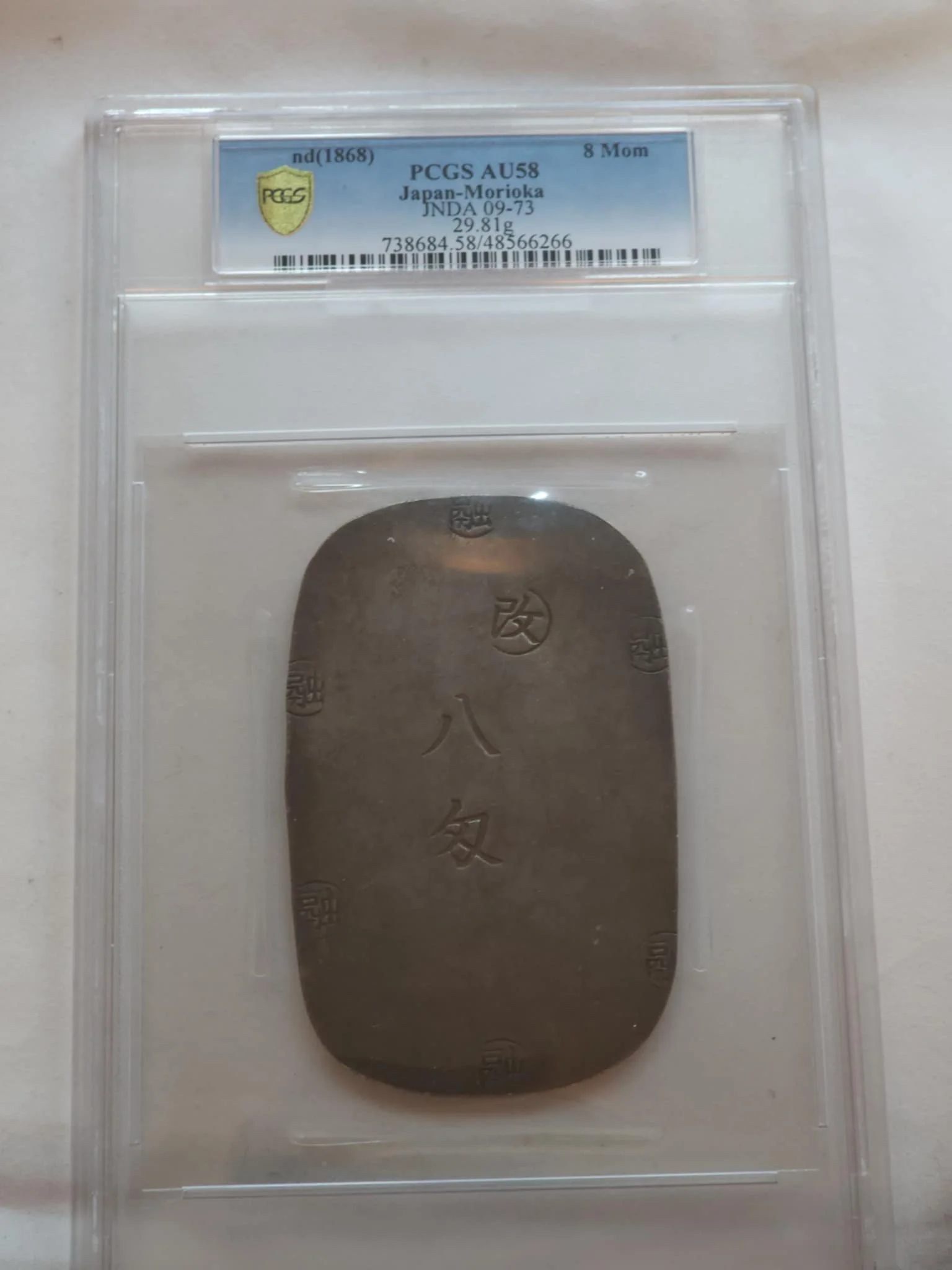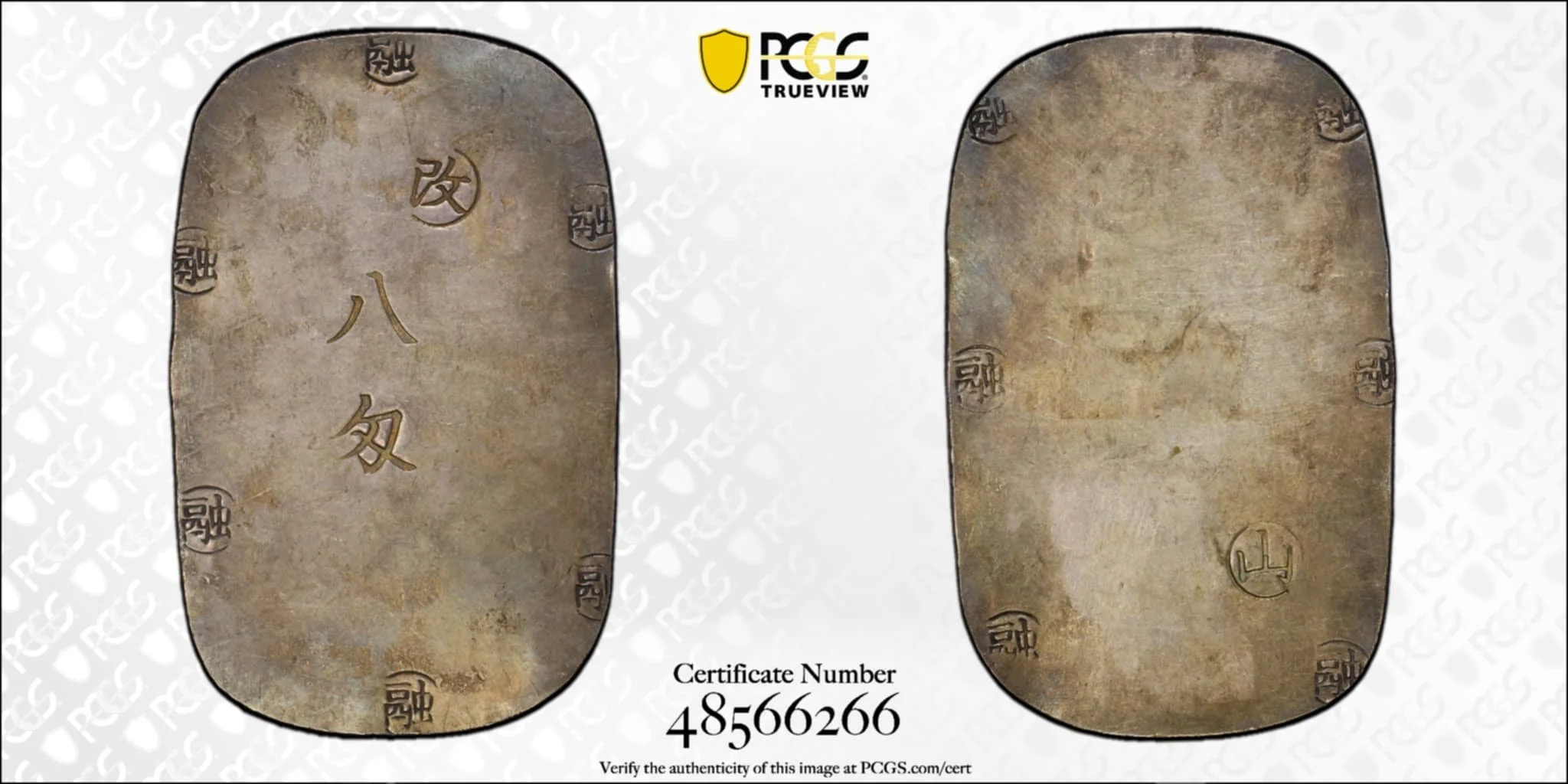 Image 1 of 2
Image 1 of 2

 Image 2 of 2
Image 2 of 2



Japanese Gold Koban (about 200 years ago)
This is a gold oval coin from Japan's Edo period during the Bunsei era, representing the traditional currency system of feudal Japan before Western-style modernization.
Coin Description:
Front side: Likely features ink-stamped official marks and calligraphic inscriptions
Back side: Probably has additional verification marks
Technical Details:
Gold composition
Koban denomination (major gold currency unit)
JDNA reference number 09-20, C#22a catalog number
Bunsei era (1819-1828)
Certified by PCGS with grade AU50 (About Uncirculated)
Historical Significance: The Koban was one of Japan's primary gold currencies during the Edo period (1603-1868), used mainly by samurai and wealthy merchants. The Bunsei era marked a time of economic reform under Shogun Tokugawa Ienari, with adjustments to the currency system attempting to address inflation. These oval gold coins represent the sophisticated but increasingly strained economic system of late feudal Japan. Unlike Western coins, traditional Japanese currencies like the Koban featured calligraphic marks rather than portraits or pictorial designs, reflecting different cultural approaches to money.
This is a gold oval coin from Japan's Edo period during the Bunsei era, representing the traditional currency system of feudal Japan before Western-style modernization.
Coin Description:
Front side: Likely features ink-stamped official marks and calligraphic inscriptions
Back side: Probably has additional verification marks
Technical Details:
Gold composition
Koban denomination (major gold currency unit)
JDNA reference number 09-20, C#22a catalog number
Bunsei era (1819-1828)
Certified by PCGS with grade AU50 (About Uncirculated)
Historical Significance: The Koban was one of Japan's primary gold currencies during the Edo period (1603-1868), used mainly by samurai and wealthy merchants. The Bunsei era marked a time of economic reform under Shogun Tokugawa Ienari, with adjustments to the currency system attempting to address inflation. These oval gold coins represent the sophisticated but increasingly strained economic system of late feudal Japan. Unlike Western coins, traditional Japanese currencies like the Koban featured calligraphic marks rather than portraits or pictorial designs, reflecting different cultural approaches to money.



















